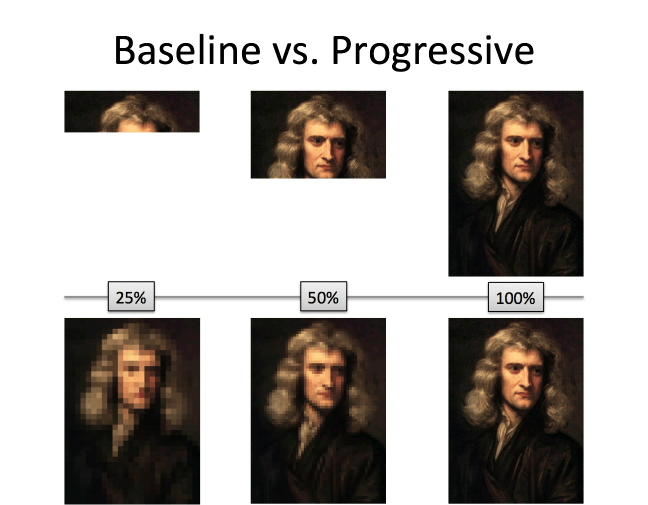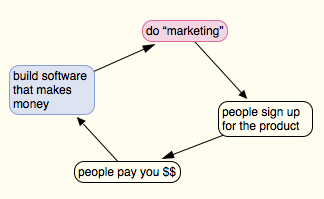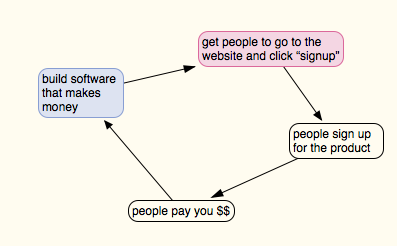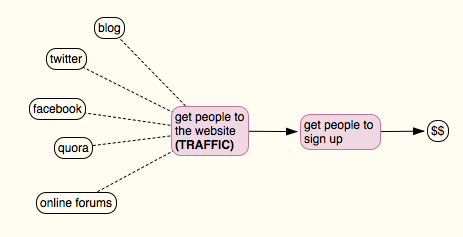I was talking to a potential hire today about what my team and I do. It occurred to me that the way I was explaining things to her was somewhat different from what I usually read online. I thought it would be interesting to try and capture that in a blogpost.
I think a lot of online content about marketing is a “race to completion” – a good piece of content that gets a lot of shares is one that is thoroughly exhaustive. We’re talking about Skyscraper Posts – the assumption being that the best piece of content is one that contains all the information you could possibly want. One of my favorite examples of this, that I actually revisit over and over again, are the howto guides over at Strengtheory.
While these pieces are impressive, and are full of useful reminders and suggestions, I wouldn’t particularly direct them at somebody who’s new and doesn’t know much. Because trying to absorb all of that information at once is overwhelming and unproductive. One space that I think understands this well is betterexplained.com, which uses something called the ADEPT method.
Anyway, let me try to recreate here the conversation I had earlier.
Marketing can be really complex and complicated and different people have different ideas about what it means, how it’s done and so on.
A lot of this information is interesting but not actually useful in helping you get the job done.
If you need to drill a hole or hammer a nail, you don’t necessarily need to get into an exhaustive physics 101 education, or understand the full spectrum of all the existing tools, the history of all the tools, who invented them, blah blah blah.
You just need to pick a good-enough drill and use a simple-enough method to drill a good-enough hole, taking measures to avoid accidentally harming yourself or destroying the wall. (So you might practice on something else first, etc.)
Elon Musk describes this approach well – “teach to the problem and not the tools“.
Anyway. So let’s describe the problem as accurately as possible. I’m a startup marketer– what does that mean? What is the problem that I solve?
When I joined the company, it had 5-6 people, all of whom had strong engineering backgrounds. They had built the product, which is customer referral software that helps online retailers make more money.
When I joined, the product already had a track record of helping retailers make millions of dollars in referral sales, so I didn’t have to worry about “does this thing even work?”.
That was a problem that the founders had solved before I got there. What is a tidy blue box that I take for granted is really full of all sorts of complex, difficult decisions and processes. I don’t need to care.
Just for fun, here’s my simplified understanding of the startup founder’s challenge:
There’s a bunch of complexity in those arrows that’s abstracted away, of course. Raising money is an art and a science that I know nothing about. Hiring and managing engineers too is something I know nothing about. Thankfully, for the time being, I only need to care about the bottom half of the above picture.
A startup marketer’s job is to get more people to sign up for the product. At the ground level, this means going out to people and literally getting them to sign up. (See: Paul Graham’s Do Things That Don’t Scale). You might call this direct sales, the name doesn’t matter.
What matters is that people signup, so that you can make more money, so that you can continue the interesting experiment of running a startup.
So. We have a clearer goal now: get more signups. Let’s leave out the signup and $$ parts. (Those are actually entire worlds themselves– the UX team is in charge of making it easier for people to signup, and the Customer Success team is in charge of helping people make more money with the product so that they pay us more commission, too.)
So a simple way of thinking about the marketing problem is:
This is oversimplified drastically, but it’s a good starting point. How do you get people to your website? There are tonnes of channels that you can get into, but you’ll have limited resources.
Here’s what we were doing early on:
(I’m using dotted lines because the paths aren’t particularly clear yet).
These were our early findings:
- The blog was by far the best way of getting traffic to the site. So much so that it would become our primary marketing mechanism for a long time. It arguably still is.
- People on Facebook weren’t really interested in the content we were posting at the time. This doesn’t mean that Facebook isn’t a viable customer acquisition channel– I do think it’s doable, but it requires a strategy and execution that fits the channel. You have to work backwards from what people are already consuming + want to consume. I do have some plans in my head for what our Facebook strategy should look like, but it’s not a top priority for me right now.
- Quora was a pretty good channel around 2013. It’s worth answering all the big, evergreen questions in your niche, because you’ll get recurring traffic. In those days I think Quora had killer SEO and would appear in the top results for anybody Googling questions. I’m not so sure if this is still the case, and Quora isn’t appearing so much in our analytics anymore.
- Online forums were a mixed bag for us. It was a great way for us to get our feet wet in the world of ecommerce (which is the ecosystem that our software functions in) – by spending time there, we learned what ecommerce best practices are, what the mistakes are, how people think about it, and so on. As a customer acquisition channel it wasn’t great, particularly we would mostly encounter beginners and newbies– people whose businesses wouldn’t have benefited much from a referral program.
Ads
We didn’t really bother much with ads in the early days, because we weren’t super sure about what we were doing yet. We wanted to get the organic acquisition channels live and running before we started reinforcing them with paid ad spend. “Pave the cowpaths” and all. We’ve since started to explore ads (Facebook, Google) that point to the site, to the blog, and to other things like dedicated landing pages.
Analytics
Our team had a strong engineering bias, and so we had a habit of tracking and reporting things. We didn’t want to overdo it – in the early days we were pretty happy just to see that there seemed to be a correlation between blog traffic and signups, and wanted to try to influence the first to see if it influenced the second.
So I suppose how I think about it is– startup marketing happens in stages.
- The earliest stage, which I wasn’t involved in, is helping to figure out what sort of product to build, and how that product should be positioned in the marketplace. What to name the product, what the value proposition is, what sort of niche to target, and so on. You need that to be good enough that you can start the ball rolling.
- The next stage, which I participated in, is identifying customer acquisition channels and figuring out what works for you. This is the “trial-and-error” stage, time for lots of weird and wild experiments. You begin to develop a content strategy, an approach, a theme, an overall plan of attack.
- The stage after that is resourcing. The previous stage is a land-grab. Now that you’ve grabbed some land, you want to make sure that you’re making good use of it. Double down on whatever’s working, let go of whatever isn’t working. You will now have some routine tasks that you can hire people to do, and you’ll want to be thinking about a hiring pipeline.
Blog traffic
The first year of blog traffic looked something like this:
We got all excited in June when we had that spike, but beyond that it was mostly slow and steady chugging along. There are no silver bullets. Whenever we got excited about traffic going up, we’d have to get frustrated by seeing it go back down.
The first two years looked like this (now in monthly view instead of weekly):
It’s funny to look back on these stats and think about how I felt at the time.
- I was really excited at the “huge bump” in Jun 2013, but by 2014 it became almost random noise.
- 2014 felt really good up until the high point of September, and then each subsequent month felt frustrating because traffic kept going down. I felt like I must’ve been screwing something up, doing something wrong. But now when I look back, it also just feels like I was being fooled by randomness.
And here’s what three years of traffic looks like:
Notice how the excitement of Jun 13 now seems almost unnoticeable. You can also see that there are annual seasonal patterns– there’s always a dip in December and January, and so we can preempt that this is going to be the case this year too.
–
I tried to redo this blogpost in the form of a tweetstorm, here:
Let's tweet a little about software marketing. For me, it began by joining a team that already made software that made money pic.twitter.com/5UXUHQCce0
— Visakan Veerasamy (@visakanv) September 7, 2017









